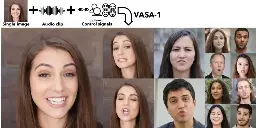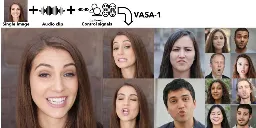Microsoft’s VASA-1 can deepfake a person with one photo and one audio track
Microsoft’s VASA-1 can deepfake a person with one photo and one audio track

Microsoft’s VASA-1 can deepfake a person with one photo and one audio track

On Tuesday, Microsoft Research Asia unveiled VASA-1, an AI model that can create a synchronized animated video of a person talking or singing from a single photo and an existing audio track. In the future, it could power virtual avatars that render locally and don't require video feeds—or allow anyone with similar tools to take a photo of a person found online and make them appear to say whatever they want.

